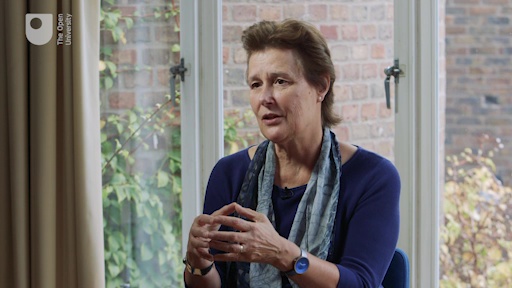5 Engaging and developing your followers
Engaging and developing your followers is a crucial part of a leader’s role. A team of people who are motivated and feel valued will perform more effectively that one where the members feel underappreciated and ignored. Professor Jean Hartley explains.

Transcript
Engagement
As previously discussed, there are many benefits to a strong relationship between employer and employee, and there is significant commentary about how to build and boost those relationships.
In their research, MacLeod and Clarke (2009) set out four enablers of employee engagement:
- Leadership
- Leaders provide a strong strategic narrative which has widespread ownership and commitment from managers and employees at all levels.
- The narrative is a clearly expressed story about what the purpose of an organisation is, why it has the broad vision it has, and how an individual contributes to that purpose.
- Employees have a clear line of sight between their job and the narrative, and understand where their work fits in.
- Engaging managers
- Managers are at the heart of this organisational culture – they facilitate and empower rather than control or restrict their staff.
- Managers treat their staff with appreciation and respect, and show commitment to developing, increasing and rewarding the capabilities of those they manage.
- Employee voice
- Employees’ views are sought out; they are listened to and see that their opinions count and make a difference.
- Employees speak out and challenge when appropriate.
- A strong sense of listening and of responsiveness permeates the organisation, enabled by effective communication.
- Integrity
- Behaviour throughout the organisation is consistent with stated values, leading to trust and a sense of integrity.
These themes are reflected throughout this course. For example, in Week 4, you explored common mistakes, and possible solutions that focused on a clear vision, good communication, developing your team and leading by example. In Week 6 you’ll look at some common challenges for every leader that also reflect the value of motivating and developing your team.
Development
Looking from the followers’ perspective, Kelley (1988) suggests that while leadership training and development is undertaken by most organisations, few focus on training their followers. He outlines topics for a potential training programme as follows:
- Improving independent, critical thinking
- Self-management
- Disagreeing agreeably
- Building credibility
- Aligning personal and organisational goals and commitments
- Acting responsibly towards the organisation, the leader, co-workers and oneself
- Similarities and differences between leadership and followership roles
- Moving between the two roles with ease.
As well as providing suitable training and development opportunities, there are several other ways in which you can support and encourage your followers:
- Allow them to take responsibility and lead on different elements of the work.
- Give them praise and encouragement, acknowledging their work and taking a step back yourself.
- Give them the confidence to be innovative by allowing them to implement changes without fear of repercussions.
- Use your knowledge and experience to coach your followers. If you don’t have time for all of them, select some key individuals who can cascade your knowledge to other team members.
Professor Jean Hartley adds her thoughts in the following video.

Transcript
Looking at this from the opposite perspective, followers may be reluctant to be developed if they feel you are asking too much of them. For example, they may argue that they aren’t paid enough to take on more responsibility or resent you delegating tasks that they aren’t interested in. Development planning should include discussion with your followers, giving them a voice and allowing you to explain the business needs that must be addressed.
Activity 6 Developing your followers
Think about an individual or group of people you want to develop into more effective followers or prepare for leadership in the future. They might be members of an existing team; a social group that you want to inspire; or social media followers that you want to build on Twitter or LinkedIn.
Once you’ve identified the person or group that you want to develop, spend a few minutes thinking about how you could inspire or develop them. What could you do to explore their needs and expectations?
Summarise your thinking below:
Discussion
Now that you’ve started thinking about followers, use your leadership journal to continue to explore these ideas and form a plan. It would be great if you could implement some aspect of follower development over the next few weeks and months. Use the GROW Tool in your Toolkit [Tip: hold Ctrl and click a link to open it in a new tab. (Hide tip)] to plan your next steps.
While our theoretical understanding of followership and its interdependence with leadership is still developing, it is clear, even from the more leader-centric studies, that followers play a vital role in leadership and business success.
Followers should be nurtured and encouraged to interact, sometimes critically, with leaders, and leaders should reciprocate with feedback and dialogue. This will not only enhance their engagement and motivation, but will also help to prepare them for their own leadership roles in the future.

